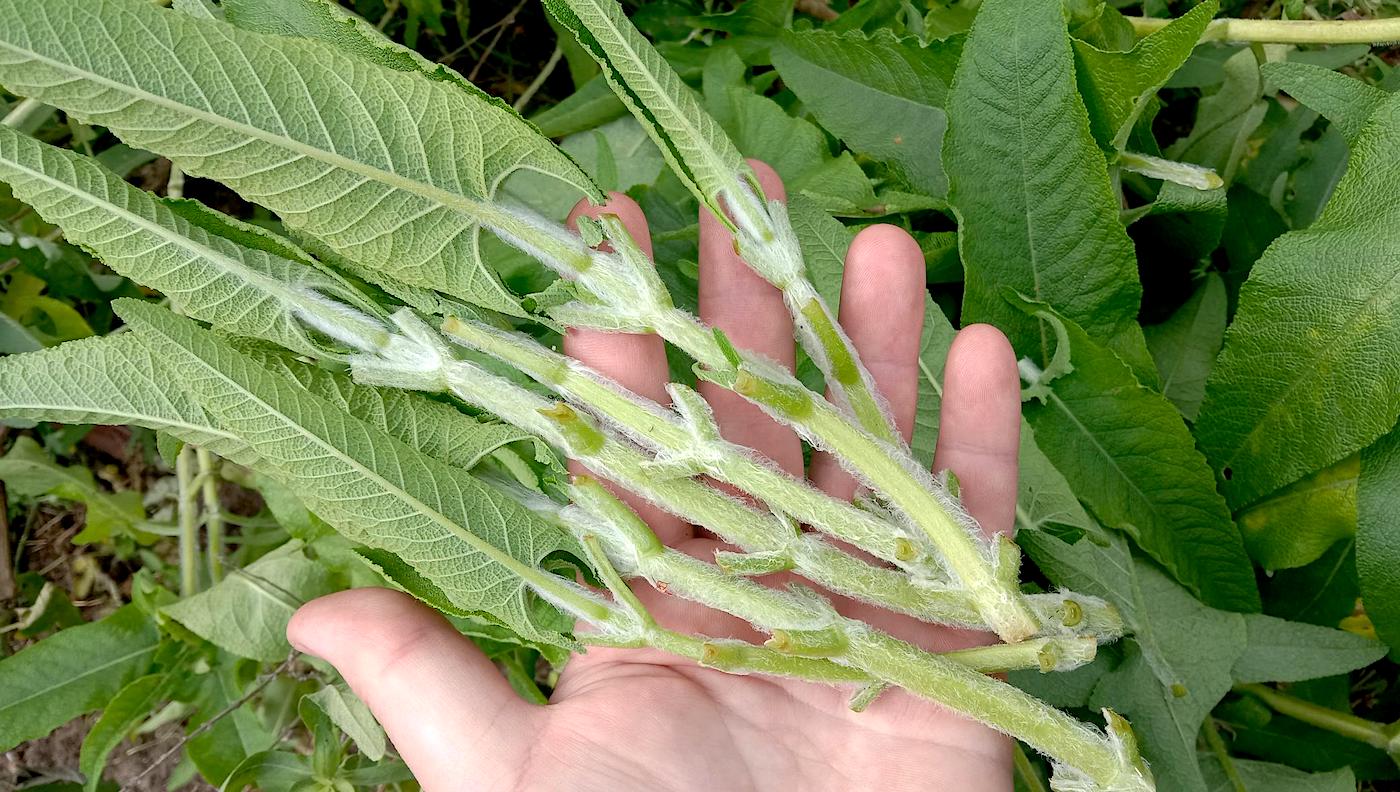I love propagating plants via cuttings.
There are generally three types of cuttings I take:
Softwood cuttings (stems that bend easily).
Semi-hardwood cuttings (stems that are stiffer and fairly firm).
Hardwood cuttings (fairly rigid stems from deciduous plants, usually taken in mid winter).
How to take cuttings (some general information).
Most of my softwood and semi-hardwood cuttings are about 10cm – 15cm in length and include around four nodes on each cutting. A node is the point where the bud grows into a stem, leaf or flower. Ensure you make your cut just under one of the nodes, where there is a concentration of hormones to stimulate root production. If you’re making a second cut at the top of your cutting, make it just above a node.
Remove any leaves from the lower half of the cutting. I usually do this with sharp secateurs, avoiding damaging the cutting itself. Damaging the cutting (such as ripping the stem), can increase the chance of the cutting becoming diseased.
Trim about half the remaining growth from the top of the cutting. You don’t want a lot of leaves on your cutting as they require energy and water will be lost through the leaves via transpiration. Depending on the plant and the size of the leaves, I usually ensure there’s a few healthy looking leaves on each cutting (remember this is just a general guide). Some gardeners cut larger leaves in half.
Moisten your propagation mix and use something like a pencil to make a hole about 5cm deep, then pop your cutting into the hole, deep enough to cover the two lower nodes.
Firm the mix around the cutting, spray the soil with a water mister and leave the tray / pot in a warm spot with good light (but not direct sunlight). The propagation mix needs to stay moist, not wet.
If your cuttings remain looking healthy and if new growth appears, you can fairly confidently assume root growth is taking place. I grow my cuttings in coir tube stock and after a while, I’ll start to see the roots making their way through the coir. That’s when I can pot them up.
Lots of plants can be easily propagated via cuttings. Here’s a few points that might help (in no particular order).
Use a quality propagation mix:
The appropriate propagation mixture is important. You want the mixture to be nice and light and hold the right amount of moisture whilst providing good air flow as this will allow the roots to penetrate the mix with relative ease.
Hygiene:
Always propagate from healthy plant stock to help minimise the spread of disease. Keep your secateurs clean and sharp and wipe them down with tea tree oil when going from plant to plant.
Some gardeners use rooting hormones:
There’s lots of rooting hormone products on the market and many gardeners use them to help their cuttings strike roots quicker. I personally don’t use them. I sometimes use raw honey for its anti bacterial properties.
Temperature:
Temperate is important for striking roots from cuttings. If you’re looking online for optimum temperatures, these normally relate to the soil temperatures which are often lower than air temperatures. Some gardeners control the environment their cuttings are raised in via heat mats or greenhouses. Generally, early autumn and early spring are the most common seasons for raising softwood and semi-hardwood cuttings. Hardwood cuttings are best taken in winter.
Moisture:
Moisture is important. If there’s too much moisture in the air and soil, then there’s an increased likelihood of fungal diseases occurring. I tend to use a misting system at first, providing moisture at regular intervals throughout the day. If you don’t have enough moisture, that’s also going to be a problem.
Air flow:
Good air flow is important to help minimise disease.
Timing:
Timing is so important. When taking your cuttings, try and work with the seasons, not against them. There’s loads of information floating about regarding the best time to take cuttings from different plants, so do your research and you’ll most likely have a much better strike rate.

